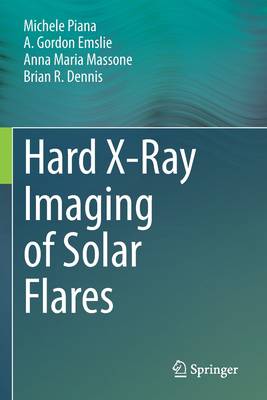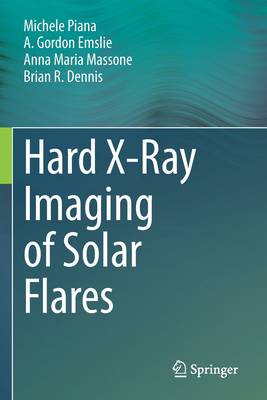
- Retrait gratuit dans votre magasin Club
- 7.000.000 titres dans notre catalogue
- Payer en toute sécurité
- Toujours un magasin près de chez vous
- Retrait gratuit dans votre magasin Club
- 7.000.0000 titres dans notre catalogue
- Payer en toute sécurité
- Toujours un magasin près de chez vous
Hard X-Ray Imaging of Solar Flares
Michele Piana, A Gordon Emslie, Anna Maria Massone, Brian R Dennis
Livre broché | Anglais
137,45 €
+ 274 points
Format
Description
The idea for this text emerged over several years as the authors participated in research projects related to analysis of data from NASA's RHESSI Small Explorer mission. The data produced over the operational lifetime of this mission inspired many investigations related to a specific science question: the when, where, and how of electron acceleration during solar flares in the stressed magnetic environment of the active Sun.
A vital key to unlocking this science problem is the ability to produce high-quality images of hard X-rays produced by bremsstrahlung radiation from electrons accelerated during a solar flare. The only practical way to do this within the technological and budgetary limitations of the RHESSI era was to opt for indirect modalities in which imaging information is encoded as a set of two-dimensional spatial Fourier components.
Radio astronomers had employed Fourier imaging for many years. However, differentlythan for radio astronomy, X-ray images produced by RHESSI had to be constructed from a very limited number of sparsely distributed and very noisy Fourier components. Further, Fourier imaging is hardly intuitive, and extensive validation of the methods was necessary to ensure that they produced images with sufficient accuracy and fidelity for scientific applications.
This book summarizes the results of this development of imaging techniques specifically designed for this form of data. It covers a set of published works that span over two decades, during which various imaging methods were introduced, validated, and applied to observations. Also considering that a new Fourier-based telescope, STIX, is now entering its nominal phase on-board the ESA Solar Orbiter, it became more and more apparent to the authors that it would be a good idea to put together a compendium of these imaging methods and their applications. Hence the book you are now reading.
A vital key to unlocking this science problem is the ability to produce high-quality images of hard X-rays produced by bremsstrahlung radiation from electrons accelerated during a solar flare. The only practical way to do this within the technological and budgetary limitations of the RHESSI era was to opt for indirect modalities in which imaging information is encoded as a set of two-dimensional spatial Fourier components.
Radio astronomers had employed Fourier imaging for many years. However, differentlythan for radio astronomy, X-ray images produced by RHESSI had to be constructed from a very limited number of sparsely distributed and very noisy Fourier components. Further, Fourier imaging is hardly intuitive, and extensive validation of the methods was necessary to ensure that they produced images with sufficient accuracy and fidelity for scientific applications.
This book summarizes the results of this development of imaging techniques specifically designed for this form of data. It covers a set of published works that span over two decades, during which various imaging methods were introduced, validated, and applied to observations. Also considering that a new Fourier-based telescope, STIX, is now entering its nominal phase on-board the ESA Solar Orbiter, it became more and more apparent to the authors that it would be a good idea to put together a compendium of these imaging methods and their applications. Hence the book you are now reading.
Spécifications
Parties prenantes
- Auteur(s) :
- Editeur:
Contenu
- Nombre de pages :
- 164
- Langue:
- Anglais
Caractéristiques
- EAN:
- 9783030872793
- Date de parution :
- 23-12-22
- Format:
- Livre broché
- Format numérique:
- Trade paperback (VS)
- Dimensions :
- 156 mm x 234 mm
- Poids :
- 267 g

Les avis
Nous publions uniquement les avis qui respectent les conditions requises. Consultez nos conditions pour les avis.






